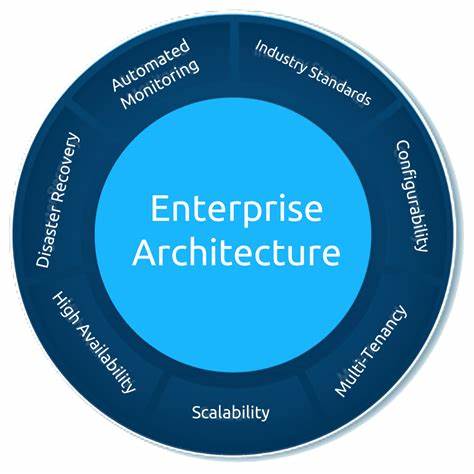
In the complex and ever-evolving world of business, effective organizational design and strategic alignment are critical for success. Enter enterprise architecture—an approach that enables organizations to achieve coherence, optimize processes, and drive innovation. In this story, we embark on a comprehensive exploration of enterprise architecture, unraveling its purpose, principles, methodologies, and benefits. Join us as we demystify the world of enterprise architecture and uncover its potential to transform businesses in the digital age.
The Foundations of Enterprise Architecture
In this section, we delve into the fundamental principles and concepts that underpin enterprise architecture. We define enterprise architecture and its role in aligning an organization’s strategy, business processes, information systems, and technology infrastructure. We explore the key components of enterprise architecture, including business architecture, data architecture, application architecture, and technology architecture. By understanding the foundations of enterprise architecture, we lay the groundwork for a deeper exploration of its practical applications.
The Importance of Enterprise Architecture
This section highlights the importance of enterprise architecture in driving organizational success. We discuss how enterprise architecture enables businesses to adapt to changes, align their operations with strategic objectives, and optimize their resources. We delve into the role of enterprise architects in bridging the gap between business and technology, facilitating effective communication, and fostering a culture of collaboration. Furthermore, we examine the impact of enterprise architecture on agility, innovation, and risk management within organizations.
Enterprise Architecture Frameworks
Enterprise architecture frameworks provide a structured approach for implementing enterprise architecture. In this chapter, we explore popular frameworks such as TOGAF (The Open Group Architecture Framework), Zachman Framework, and the Federal Enterprise Architecture Framework (FEAF). We examine the core components, methodologies, and tools associated with each framework, highlighting their strengths and applications. By understanding these frameworks, organizations can choose the most suitable approach to implement enterprise architecture based on their unique needs.
The Enterprise Architecture Process
Implementing enterprise architecture requires a well-defined process. In this chapter, we delve into the various stages of the enterprise architecture process, including planning, analysis, design, implementation, and governance. We explore the methodologies and best practices associated with each stage, emphasizing the need for continuous evaluation and refinement. We also discuss the role of enterprise architecture governance in ensuring the alignment of initiatives, managing risks, and maintaining the integrity of the architectural vision.
The Benefits and Challenges of Enterprise Architecture
Enterprise architecture offers a multitude of benefits for organizations, but it also presents challenges. In this chapter, we examine the advantages of enterprise architecture, including improved business-IT alignment, enhanced decision-making, increased operational efficiency, and reduced IT complexity. We also address the challenges organizations may face during the implementation process, such as cultural resistance, organizational silos, and resource constraints. By understanding the benefits and challenges, organizations can navigate the journey of enterprise architecture more effectively.
Enterprise Architecture in the Digital Age
As we enter the digital age, the role of enterprise architecture becomes even more crucial. In this chapter, we explore how enterprise architecture adapts to the demands of digital transformation. We discuss the integration of emerging technologies, such as cloud computing, artificial intelligence, and the Internet of Things, into enterprise architecture practices. We also examine the role of enterprise architecture in ensuring cybersecurity, data privacy, and compliance in the digital era. By embracing enterprise architecture in the digital age, organizations can navigate the complexities of a rapidly evolving technological landscape.
Moving Forward with Enterprise Architecture
Enterprise architecture serves as a guiding force in shaping the future of organizations. By aligning business strategies, processes, and technologies, enterprise architecture empowers organizations to adapt, innovate, and thrive in the dynamic business landscape. In this story, we have demystified the concept of enterprise architecture, exploring its foundations, importance, frameworks, processes, benefits, and challenges. As businesses continue to embrace enterprise architecture, they unlock the true potential of organizational design, propelling them towards sustainable success in the digital age.

